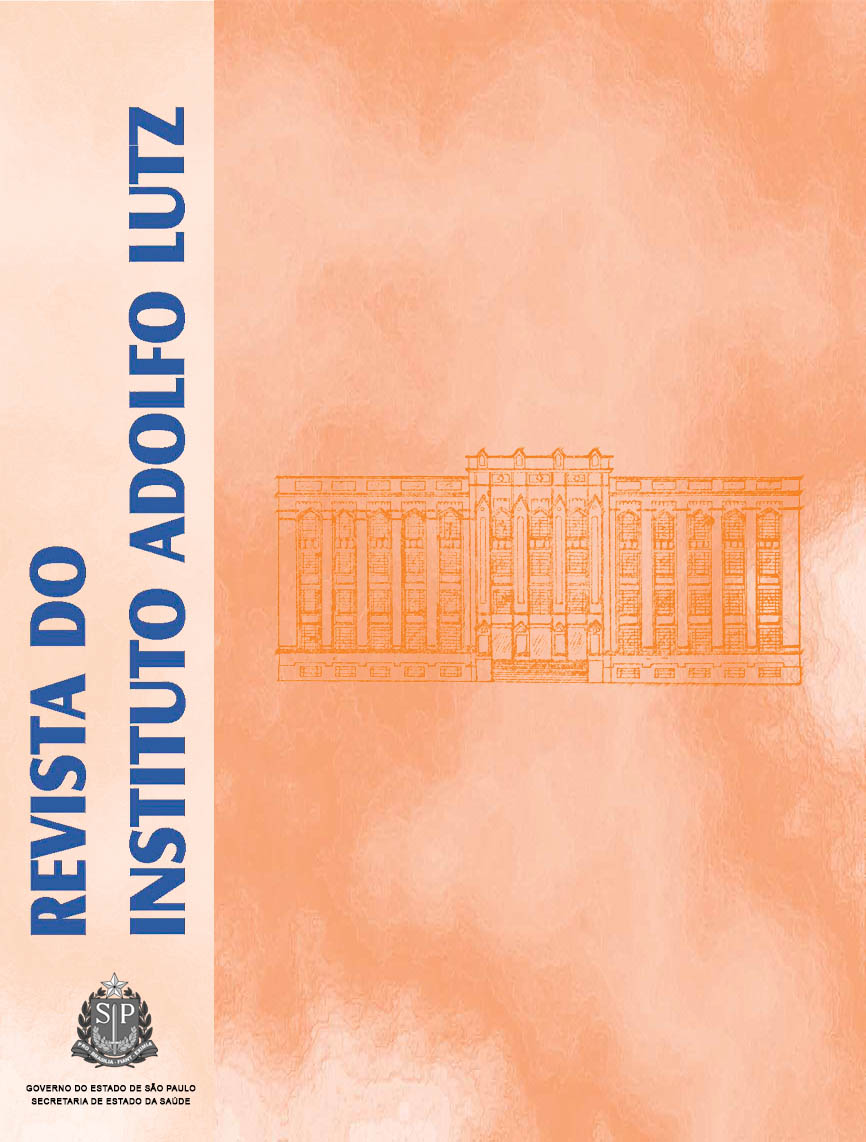Abstract
Staphylococcus aureus is one of the most important food-borne pathogens, and although Brazilian Sanitation Surveillance Agency (ANVISA) does not specifically regards for coagulase-negative Staphylococcus (CNS) isolation from foods, it is known that this group of bacteria possesses genes associated with biofilm formation and enterotoxins production. In this context, the present study aimed at identifying the S. aureus and CNS in finger-foods and snacks samples, and to evaluate the ability of these strains to produce biofilm in vitro by means of two methodologies: Congo Red agar and polystyrene microplates cultures. Twenty-two staphylococcal isolates belonging to eight species were obtained from 122 finger-foods, sandwiches and ready-to-eat (RTE) food products. S. aureus, S. warneri and S. haemolyticus were the most frequent isolates. Biofilm production by Staphylococcus spp. was observed in seven (31.8 %) isolates by Congo Red agar technique and three (13.6 %) by polyestirene microplate methodology. There was no positive isolate biofilm producer by both methodologies. Despite the low number of isolates, a concordance of 59.1 % between the tests was found. The ability to produce biofilm is an important virulence factor in Staphylococcus spp., and it can support to define the role of CNS as food-borne pathogen.References
1. Miwa N, Kawamura A, Masuda T, Akiyama M. An outbreak of food poisoning due to egg yolk reaction-negative Staphylococcus aureus. Int J Food Microbiol. 2001;64:361-6.
2. Do Carmo LS, Dias RS, Linardi VR, Sena MJ, Santos A, Fari, ME et al. Food poisoning due to enterotoxigenic strains of Staphylococcus present in Minas cheese and raw milk in Brazil. Food Microbiol. 2002;19:9-14.
3. Do Carmo LS, Souza Dias R., Linardi VR, Sena MJ, Santos DA. An outbreak of staphylococcal food poisoning in the municipality of Passos, MG, Brazil. Braz Arch Biol Technol. 2003;46:581-6.
4. Colombari V, Mayer MD, Laicini ZM, Mamizuka E, Franco BD, Destro MT et al. Foodborne outbreak caused by Staphylococcus aureus: Phenotypic and genotypic characterization of strains of food and human sources. J Food Prot. 2007;70:489-93.
5. Baird-Parker AC. The staphylococci: an introduction. J Appl Microbiol. 1990;19:1-8.
6. Noble WC. Systematics and the natural history of Staphylococci. J Appl Microbiol. 1990;69:39-48.
7. Holtfreter S, Kolata J, Bröker BM. Towards the immune proteome of Staphylococcus aureus – The anti-S. aureus antibody response. Int J Food Microbiol. 2010;300:176-92.
8. Fey PD, Olson ME. Current concepts in biofilm formation of Staphylococcus epidermidis. Future Microbiol. 2010;5:917-33.
9. Jessen B, Lammert L. Biofilm and disinfection in meat processing plants. Int Biodeterior Biodegradation. 2003;51:265-9.
10. Somers EB, Wong AC. Efficacy of two cleaning and sanitizing combinations on Listeria monocytogenes biofilms formed at low temperature on a variety of materials in the presence of ready-to-eat-meat residue. J Food Prot. 2004;67:2218-29.
11. Harraghy N, Seiler S, Jacobs K, Hannig M, Menger MD, Herrmann M. Advances in in vitro and in vivo models for studying the staphylococcal factors involved in implant infections. Int J Artif Organs. 2006;29:368-78.
12. Melchior MB, Fink-Gremmels J, Gaastra W. Comparative assessment of the antimicrobial susceptibility of Staphylococcus aureus isolates from bovine mastitis in biofilm versus planktonic culture. J Vet Med B Infect Dis Vet Public Health. 2006a;53:326-32.
13. Melchior MB, Vaarkamp H, Fink-Gremmels J. Biofilms: a role in recurrent mastitis infection? Vet J. 2006b;171:398-407.
14. Clutterbuck AL, Woods EJ, Knottenbelt DC, Clegg PD, Percival SL. Biofilms and their relevance to veterinary medicine. Vet Microbiol. 2007;121:1-17.
15. Ezekiel CN, Kayode FO, Fapohunda SO, Olorunfemi MF, Kponi BT. Aflatoxigenic moulds and aflatoxins in street-vended snacks in Lagos, Nigeria. J Food Saf. 2012;14:83-8.
16. Hanashiro A, Morita M, Matté GR, Matté MH, Torres EAFS. Microbiological quality of selected street foods from a restricted area of São Paulo city, Brazil. Food Control. 2005;16:439-44.
17. Lancette GA, Bennett RW. Staphylococcus aureus and Staphylococcal Enterotoxins. In: Downes FP, Ito K. Compendium of Methods for the Microbiological Examination of Foods. Washington (DC):Apha, 2001 p.387-403.
18. Murray PR, Jorgensen JH, Baron EJ, Landry ML, Pfaller MA. Manual of Clinical Microbiology. 9th ed. Washington (DC): ASM Press; 2007.
19. Freeman DJ, Falkiner FR, Keane CT. New method for detecting slime production by coagulase negative staphylococci. J Clin Pathol. 1989;42:872-4.
20. Vasudevan P, Nair MKM, Annamalai T, Venkitanarayanan KS. Phenotypic and genotypic characterization of bovine mastitis isolates of Staphylococcus aureus for biofilm formation. Vet Microbiol. 2003;92:179-85.
21. Tavakoli HR, Soltani M, Bahonar A. Isolation of some human pathogens from fresh and smoked shad (Alosa kessleri) and silver carp (Hypophthalmichthys molitrix). Iran J Fish Sci. 2012;11:424-9.
22. Rode TM, Langsrud S, Holck A., Møretrø, T. Different patterns of biofilm formation in Staphylococcus aureus under food-related stress conditions. Int. J. Food Microbiol. 2007;116:372-383.
23. Feglo P, Sakyi K. Bacterial contamination of street vending food in Kumasi, Ghana. J Med Biomed Sci. 2012;1:1-8.
24. Pérez-Rodríguez F, Valero A, Carrasco E, García RM, Zurera G. Understanding and modelling bacterial transfer to foods: a review. Trends Food Sci Technol. 2008;19:130-43.
25. Podkowik M, Jarosław B, Bania J. Genotypes, antibiotic resis-tance, and virulence factors of staphylococci from ready-to-eat food. Foodborne Pathog Dis. 2012;9:91-9.
26. Møretrø T, Hermansen L, Holck AL, Sidhu MS, Rudi K, Langsrud S. Biofilm formation and the presence of the intercellular adhesion locus ica among staphylococci from food and food processing environments. Appl Environ Microbiol. 2003;69:5648-55.
27. Rodrigues LB, Santos LR, Tagliari VZ, Rizzo NN, Trenhago G, Oliveira AP et al. Quantification of biofilm production on polystyrene by Listeria, Escherichia coli and Staphylococcus aureus isolated from a poultry slaughterhouse. Braz J Microbiol. 2010;41:1082-5.

This work is licensed under a Creative Commons Attribution 4.0 International License.
Copyright (c) 2012 Instituto Adolfo Lutz Journal
